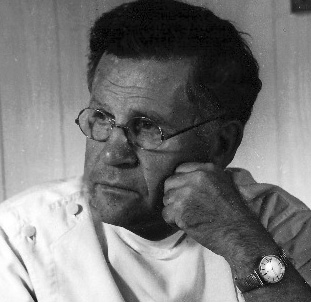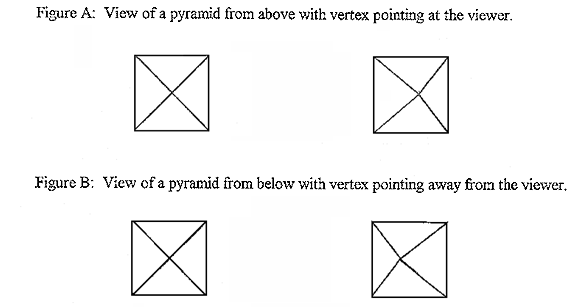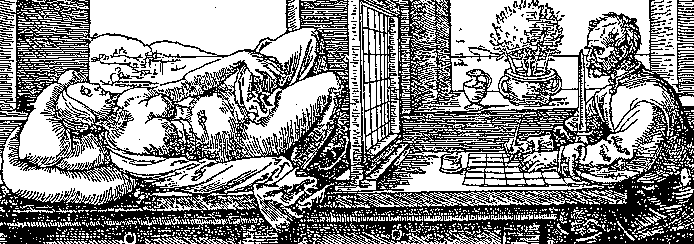ON
"TWO-EYEDNESS"
AND "ONE -EYEDNESS"
OR
STEREOPSIS
AND THE ARTS OF PAINTING
AND PHOTOGRAPHY
By Karl M. Illig MD

Photo Günter Schindler 1955
~~ @Com ~~ On the web since 1997
|
|
ON
"TWO-EYEDNESS"
AND "ONE -EYEDNESS"
|
|
Voigtlander
Stereflekscop
45 x 107mm, glass;
c1913-1930's;
3-Heliar 60mm /4.5Many years back, during my student days, I became interested in photography. One day I saw an old Voigtlander stereo-camera in a Bonn photo shop. Upon questioning, assurance was given me that it was in good working condition and that negative plates were still available, so I bought it and a stereo-viewer as well. I took many photographs with it and was pleased with the beautiful stereo-pictures that often resulted
All went well until, almost simultaneously, the camera gave up its ghost and the plates were no longer available. Since photography was now almost an obsession for me, I began using a conventional camera. The results disappointed me, so, in order to improve my skills, I sought and was given much good advice. I learned to include a certain amount of foreground, to utilize contrasting values, and other techniques and tricks. None of these had been needed with the stereo-camera. As a rule, viewing the stereo-pictures was pleasant. It was possible to see, so to speak, around a telephone pole or through a wire fence or to disentangle a thicket of leaves.
Our capacity for stereoscopic vision was vividly demonstrated to me once by chance. I had fallen asleep under a tree and upon awakening I first blinked and looked upward with one eye and saw a jumble of leaves and branches. Then, upon looking upward with both eyes, the spatial arrangement of the branches and leaves became clear in detail.
This serendipitous observation impressed on me that stereopsis is such a common and ever-present mental function that it is seldom noticed. The physiology and behavior of predatory animals, and that of the human species, as well, is to a great degree based on stereopsis and is an object of wonder and research.
In this essay, however, we shall explore the effect of stereopsis on painting and on photography. We shall focus our attention on the efforts practitioners of these arts have been making for centuries in order to represent spatial impressions. The discussion of the development of painting since the discovery of the principles of perspective is certainly one valid avenue of exploration. Here the experience of the writer, who, as a beginner in photography started with a stereo-camera and ended up in an artistic dead end, is another. The beginner had to learn to apply some tricks and rules of composition in order to replace what he had lost. He had to learn to avoid certain shots, thus acknowledging the exploitable relationship between foreground and background, and realize that strong contrasts in value and color (e.g. complementary colors) are often necessary for a good picture and that some compositions simply do not make good photographs.
The artist, of course, wishes to attract the viewer's attention to messages concerning mood, or the expression of certain ideas, perhaps by using symbolism, but without the expression of spatial depth, no artist working in the objective-realistic direction is likely to succeed. The difficulty lies in the monocularity of the painted picture or photograph; this must be overcome by the means indicated above. In this the masters of impressionism were especially successful. It appears obvious in many of their works that it was their desire to represent the large scale and depth of the landscapes or architectural subjects. They did not always succeed. An example is a painting by Pissarro, I'Hermitage, Pontoise, which would have been an ideal subject for a stereo-photograph.
You'll need a pair of red / green glasses for this. Enlarge
Strictly speaking, the one-eyed image and two-eyed vision are in conflict with one another, a conflict over which many a student has stumbled unknowingly, without being alerted by
his or her art instructor. A demonstration of these differences (as experienced by the writer) by the teacher would be helpful to the student. For example: A student is to draw a simple chair from close-up. The student may be warned that the task is not as simple as it first appears to be. Soon the student discovers the inherent difficulties in creating a spatial impression from the spoke-like wood parts. The student is not told that it is the incongruity of the retinal images, necessary for stereopsis, which creates the difficulty in the representation of the object and that the assignment is to retouch the drawing somehow in order to give the depiction of the chair the aforementioned spatial character.
This thing isn't related to stereoscopic vision, but it's interesting nevertheless because the illusion is so strong: the lines are vertical! The masters of painting and photography have the same difficulty. They overcome it with means that do not come from our capacity for stereopsis but are used in exchange for it. With these means the artist often finds ways of expression which, although energized by our stereoptic sense, reach beyond and out to a certain psychic realm. Often artists use terms like depth, largeness, and luminescence but seldom think of the polarity of the situation, with our gift of stereopsis ("two-eyedness") on the one hand and the monocularity ("one-eyedness") of their artwork on the other.
It is no wonder, because it was as late as the middle of the last (nineteenth) century when the physicist Sir Charles Wheatstone first theorized that the incongruity of the two retinal images and the subsequent cerebral processing produced a spatial awareness. The great Leonardo was close to the knowledge of stereopsis, for he reported that more than half of a small globe is visible to an observer. Now we know that everything we see is constantly recorded by means of two incongruent retinal images which serve to create the spatial impression. Most people, about 96%, have this keen sense of stereopsis. To the rest, who lack this capability, the conflict of polarity mentioned above is probably irrelevant.
Seen from the viewpoint of art education it appears to be very important to impart the knowledge of this fundamental conflict to the student. The difference between "one-eyedness" and "two-eyedness" should be demonstrated experimentally. The simplest way would be the use of a stereo-viewer to view simple drawings like those in Figures A and B or stereo-photographs of common items. As soon as the student has a grasp of the principles mentioned above, he or she will understand how to deal with the one-eyed arts of painting and photography. The small expenditure of time and means will be rewarded by a more thorough understanding of stereopsis and open the road to a logical progression toward realistic spatial representation.
The student is then free to pursue spatial representation or to abandon it. If he or she continues to work toward good spatial representation such means are: contrast by color and value, perspective alteration, exaggeration, omission of various details, and change of composition. There are numerous examples of these techniques in the work of the masters. Sometimes photographers have a more difficult problem since many of their compositions cannot be altered.
With the knowledge that there is a conflict between stereoscopic vision and the depiction of three dimensional objects and scenes on a flat surface, the student will move logically to develop the skills to reconcile the conflict.
This article may duplicate the work of art teachers who present similar thoughts about the difficulty explained above; however, I have not found mention of this problem in art literature. To the students of the arts and their teachers I would like to recommend the chapter on stereopsis, pp. 145-177, in Hubel's book Eye, Brain and Vision (Distributed by W. H. Freeman Company, 41 Madison Avenue, New York, NY 10010 or 20 Beaumont Street, Oxford OX12NQ England.

Figure C:
Dürer’s draftsman records the model with the right eye. Result: Single eye perspective.

Figures A and B show the principle of the incongruity of the retinal images as a necessary condition for stereopsis. In this simplified case the retinal image of the left eye is symmetrical since the optical axis of this eye and the pyramidal axis happen to coincide. The retinal image of the right eye has a different viewing point. Therefore the tip of the pyramid in Figure A points at the viewer and in Figure B it points away from him. This is the case when these two sets are viewed through a stereoscope.
The opposite effect can be achieved by simply looking at each set when crossing the eyes. At a certain degree of crossing, three images can be seen and the middle image appears clearly to be a pyramid, however with the opposite effect of that with the stereoscope: In figure A the pyramid now points away from the viewer, and in figure B the pyramid points toward him. (This effect can be explained by the fact that the left eye receives the right image and the right eye sees the left image.)
Conclusion:
In this essay an attempt was made to demonstrate the difference between the concept of perspective and stereopsis. The stereo-optic process was shown as being based on the incongruity of the two retinal images which are "computerized" by the brain in order to create the three-dimensional experience called stereopsis.Mention was made of the fact that not until the middle of the nineteenth century was stereopsis described, by Sir Charles Wheatstone. Amazingly, artists seem to have ignored its importance, or simply had no idea of its presence. It does not fit into the old concept of perspective, which has been illustrated so convincingly by Dürer (figure C). In this illustration the draftsman is shown recording what he sees with one eye, here with the right eye. In fairness to the old masters, the nature of stereopsis was unknown to them and they used perspective with good, sometimes powerful, effect in order to express their spatial perceptions. The masters, including the impressionists, applied the techniques mentioned earlier with great success. As painters or photographers they in effect strove to "compress" the three-dimensional experience onto a two-dimensional surface. From the foregoing we come to this logical conclusion: an artist trying to portray his or her subject realistically will find the work easier after having realized the difference between stereopsis and perspective.
| Links to other things to do with stereoscopic seeing: Stereograms |
|
~~~ Email ~~~ © 2007 @Com. ~~~